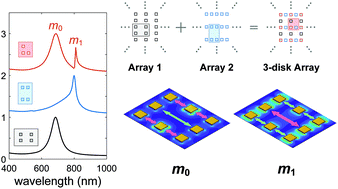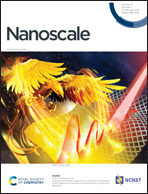Hybridized surface lattice modes in intercalated 3-disk plasmonic crystals for high figure-of-merit plasmonic sensing†
Abstract
Engineering the spectral lineshape of plasmonic modes by various electromagnetic couplings and mode interferences enables significant improvements for plasmonic sensing. However, bulk and surface sensitivities remain constrained by a trade-off arising from their respective dependence on the interaction volume and decay length of the plasmonic mode, making higher bulk sensitivity realized at the expense of reduced surface sensitivity. We propose a new approach to overcome this trade-off by combining near-field and far-field coupling in an intercalated 3-disk plasmonic crystal, where ∼10× higher figure of merit (FoM) and ∼2× higher surface sensitivity can be achieved, in comparison with those achievable by localized surface plasmons. A plasmonic mode with a Q-factor up to ∼110 is demonstrated based on gold 3-disk arrays in the visible spectrum, with a bulk FoM of ∼24 and a surface sensitivity prefactor of ∼13.56. The design and fabrication simplicity of the 3-disk structure highlight its potential for a robust plasmonic sensing platform with a high figure of merit.



 Please wait while we load your content...
Please wait while we load your content...